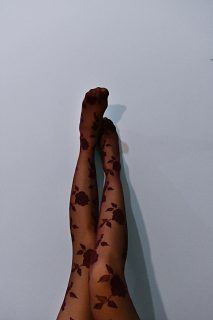Chronic venous insufficiency (CVI) is a condition that occurs when the veins in your legs are unable to efficiently pump blood back to your heart. This can cause a number of symptoms, including pain, swelling, and skin changes. CVI is a progressive condition, which means it typically gets worse over time.
There are four stages of CVI, each with its own set of symptoms and treatment options. Longevity Live Paid Content.

Photo by Dids
Stage I
In stage I CVI, the valves in your veins are slightly damaged. This can cause mild symptoms, such as occasional leg pain or heaviness after standing for long periods of time. Treatment for stage I CVI typically involves wearing compression stockings and elevating your legs when possible.
Stage II
In stage II CVI, the damage to the valves in your veins is more severe. This can cause moderate symptoms such as daily leg pain or heaviness, swelling after standing for long periods of time, and skin changes such as discoloration or ulcers. Treatment for stage II CVI often includes wearing compression stockings and using medications to improve circulation. You may also need to have surgery to repair the damaged valves in your veins.
Stage III
In stage III CVI, the damage to the valves in your veins is even more severe. This can cause significant symptoms such as constant leg pain or heaviness, swelling even when you’re not standing up, and skin changes such as ulcers or blackening of the skin around the affected area. Treatment for stage III CVI usually includes wearing compression stockings and using medications to improve circulation. Surgery may also be necessary to repair damaged valves or remove blockages in your veins.
Stage IV
Stage IV CVI is the most severe form of the condition. It can cause debilitating symptoms such as constant leg pain or heaviness, swelling that doesn’t go down even when you’re lying down, and skin changes such as ulcers or blackening of large areas of skin around the affected area . Treatment for stage IV CVI often includes wearing compression stockings and using medications to improve circulation. Surgery may also be necessary to repair damaged valves or remove blockages in your veins.
What to Expect when you have Chronic Venous Insufficiency
Chronic Venous Insufficiency (CVI) is a condition in which your veins have difficulty sending blood from your legs back to your heart. This can cause a number of symptoms, including pain, swelling, and skin changes. There are two types of CVI: primary and secondary.
Primary CVI is the most common type and occurs when the valves in your veins don’t work properly. Secondary CVI occurs when there is damage to the veins themselves, usually as a result of another condition such as deep vein thrombosis or obesity. If you have CVI, you may experience one or more of the following symptoms:
- Swelling in your ankles, feet, or legs (edema)
- Aching or pain in your legs
- Cramping in your calves
- Itching
- Skin changes, including redness, ulcers, or brownish patches (stasis dermatitis)
Varicose veins

Photo by Elīna Arāja
These symptoms can range from mild to severe and may get worse over time if left untreated. If you have any of these symptoms, it’s important to see a doctor, so they can diagnose and treat the underlying cause. Treatment for CVI will vary depending on the severity of your condition but may include lifestyle changes, compression stockings, medication, surgery, or a combination of these methods. If you have CVI, it’s critical to take care of your legs and feet.
This includes:
- Wearing compression stockings as prescribed by your doctor
- Exercising regularly
- Avoiding long periods of standing or sitting
- Keeping your skin clean and dry
- Elevating your legs when possible
By following these tips, you can help reduce your symptoms and improve your overall health.
There is no one-size-fits-all solution to chronic venous insufficiency, but there are treatments that can improve the condition. It would be best to visit a clinic or consult El Paso Vein Doc as some people may need surgery to correct the problem, while others may be able to manage their symptoms with lifestyle changes and compression stockings. The most significant thing is to work with a doctor to develop a treatment plan that is right for you. With proper treatment, chronic venous insufficiency does not have to be a debilitating condition.
Main Image Credit
Thank you to Bruno Silva for the fmain cover photo.



![women [longevity live]](https://longevitylive.com/wp-content/uploads/2020/01/photo-of-women-walking-down-the-street-1116984-100x100.jpg)










